55 (Fifty-Five) Windows Palace
One of the most stunning buildings in Bhaktapur Durbar Square (Layaku) is the Palace with 55 (Fifty-Five) Windows . This palace was built by King Bhupatindra Malla in 1677. The Palace of 55(Fifty-Five) Windows got its name from the façade’s 55 (Fifty-Five) intricately carved wooden windows. This palace is constructed around a number of interconnected interior courtyards. According to legend, there were initially 99 courtyards, but currently there are just nine.
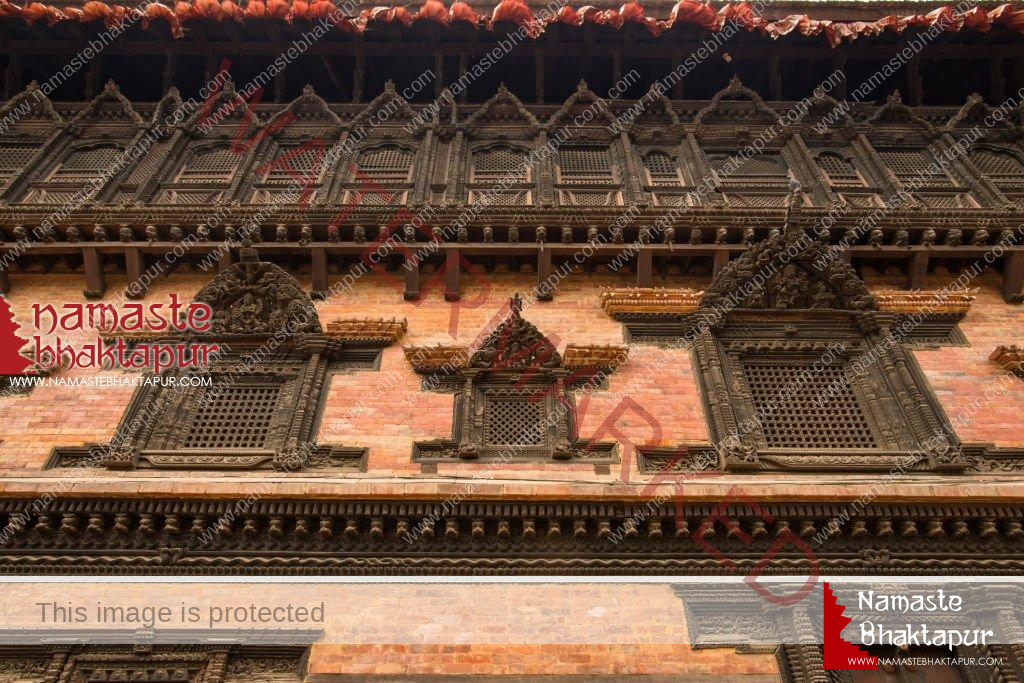
An even more impressive work of art can be found directly behind the golden gate. Without a doubt, on Bhaktapur Durbar Square (Layaku) It is none other than 55 windowed palaces who is the master of the craft.
Pachpannajhyale Durbar(५५ झ्याले दरवार) is another name given by locals on Nepali Language for these 55 (Fifty-Five) windowed palaces. Nge Nyapa Jhya is the equivalent in Newari (Nepal Bhasa) language.
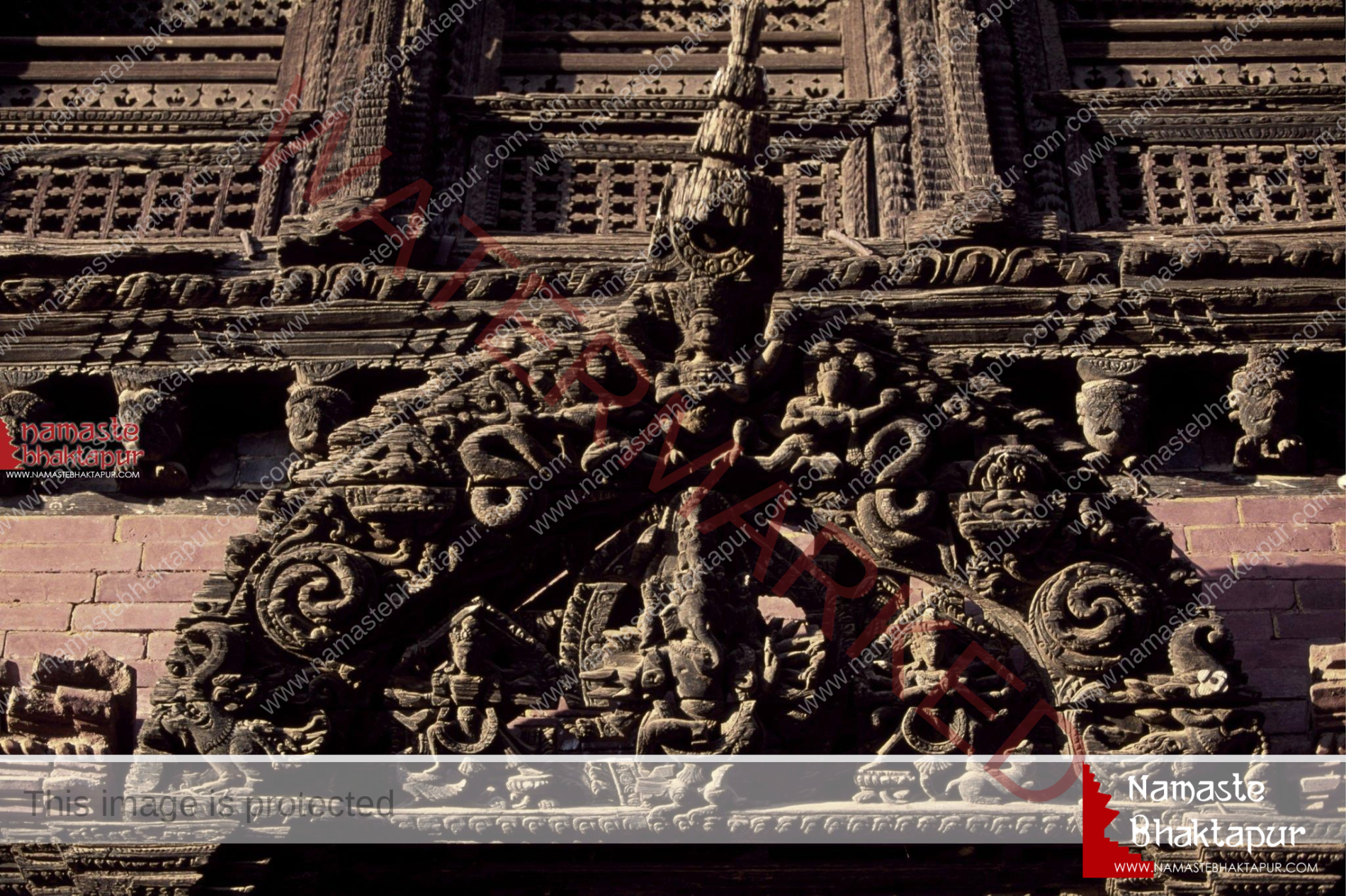
successful completion of the King Yaksa Malla‘s initial construction. This is a fact as well, yes. even when King Yaksha Malla had it concreted, it was only a structure.
An overview of 55 Window Palace’s history
The reconstruction of this palace was later begun by King Bhupatindra Malla after he assumed the throne as Emperor of Bhaktapur in 1696. However, it is reported to have taken 58 years to finish.
In 1754 AD, during the reign of King Ranjit Malla, the palace was fully completed. The son of King Bhupatindra Malla, King Ranjit Malla, made significant contributions to this palace as well. The palace was tragically destroyed by the devastating earthquake that occurred in 1934 AD.
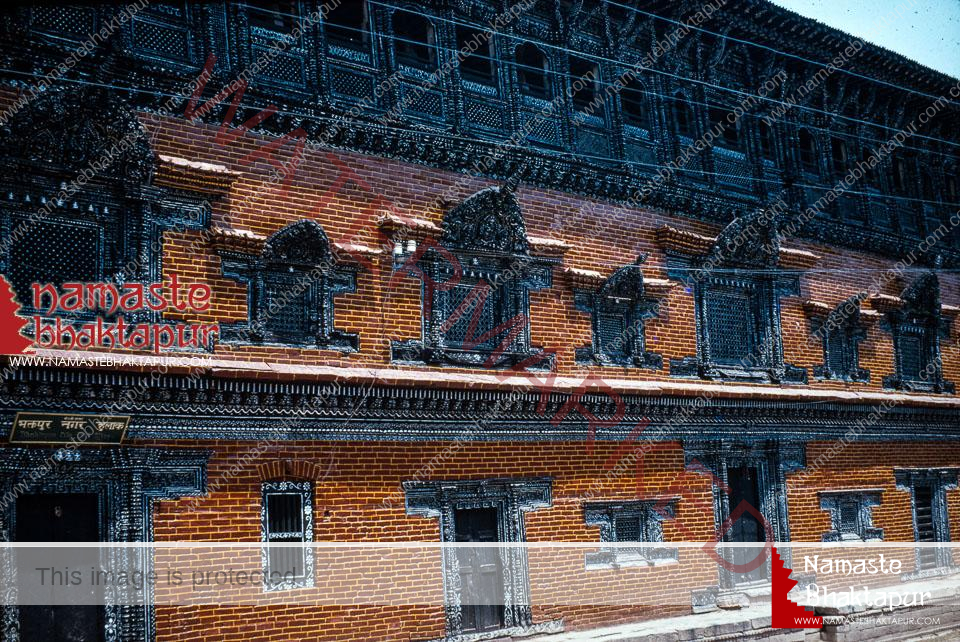
Date: 1962-1963 Location: Bhaktapur, Bhaktapur Description: Malla palace in Durbar Square.
In spite of this, the palace was renovated while retaining its original windows and struts. But it wasn’t in its typical form. The Bhaktapur royal palace originally served as the city’s post office in 1962.
The 55-window palace contains what, exactly?
In the meantime, this structure serves as the finest example of Malla-era woodcarvings. With the addition of black, that way appears more appealing. As you can see, there was a flawless wood carving reflection on the palace’s first and second storeys.
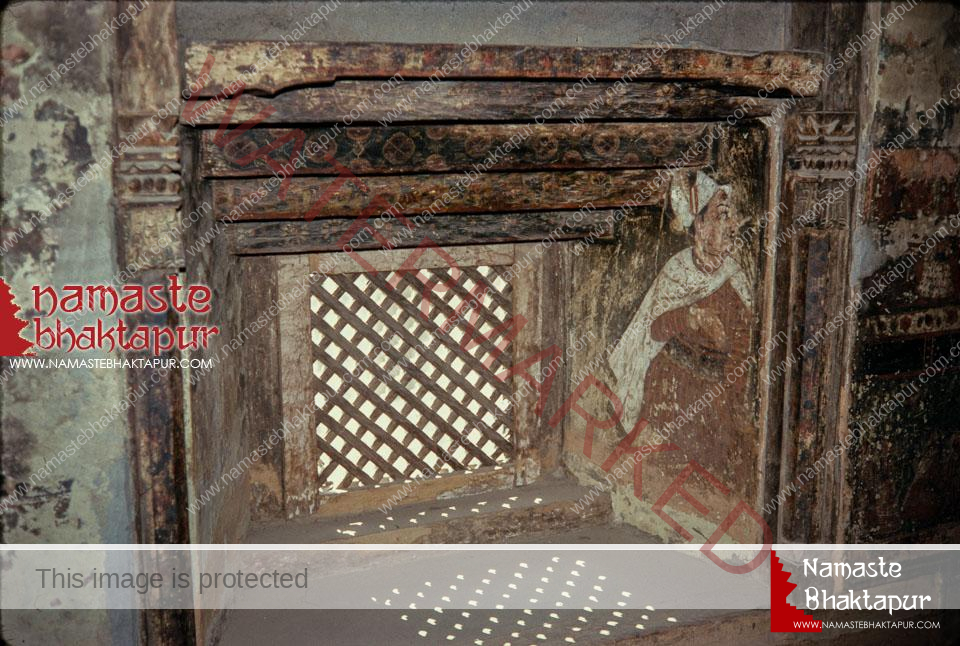
Date: 1974 Location: Bhaktapur, Bhaktapur Description: Inside view of window of the Royal Palace at Durbar Square.
Doors and tiny, ornately carved windows alternate in the first storey. Eleven deeply carved windows may be found in the front portion of the second building. with a torona that is inclined over it.
With his shakti, Asta Bhairav has carved details that are visible. Lord Ganesha and Lord Kumar‘s carvings in the toronas are also noteworthy.
Additionally, the first floor’s walls reveal a lot about the political climate at the time. Images that depict both the social and regal lifestyles of Malla kings. This comprises the murals of Queen Vishwo Laxmi and King Bhupatindra Malla.
Additionally, there are pictures of Lord Bhairava’s Vishwo Roopa with his shakti. Ramayan’s front line of battle. drawings of several deities, among others. While the interior of this palace has been closed for a very long time.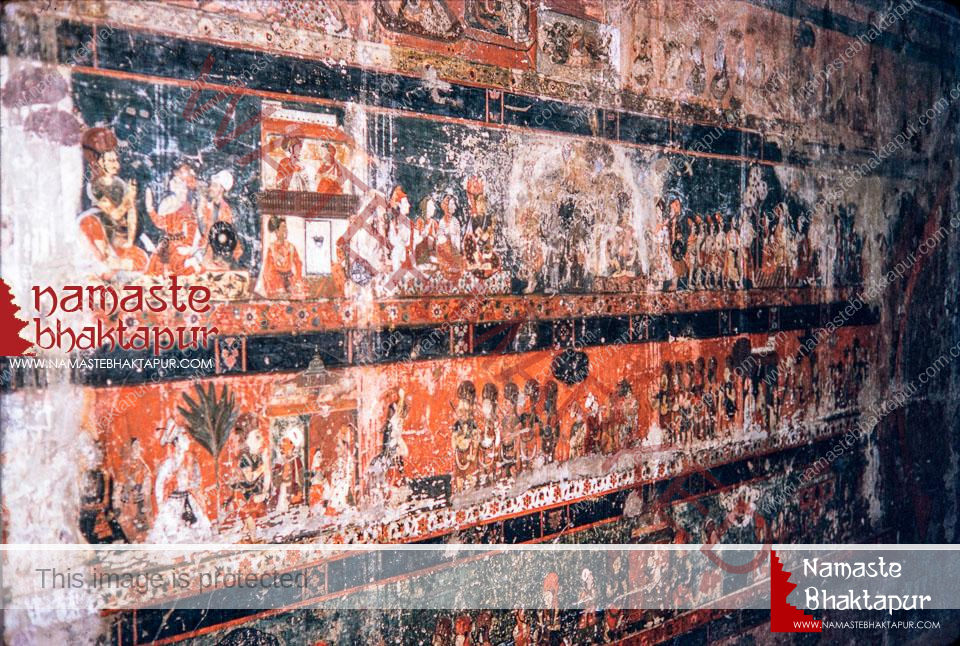
Those paintings might not be visible to you. But exploring this palace won’t be pointless. Ancient structures and woodcarvings are still accessible.
 Bhaktapur
Bhaktapur 

